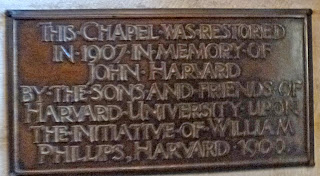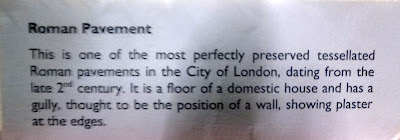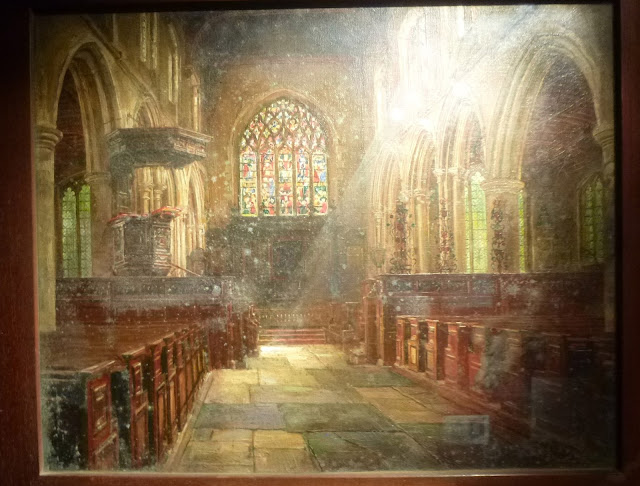On my last day I want go back to Southwark
 The Borough Market is more crowed than usual, on a Saturday.
The Borough Market is more crowed than usual, on a Saturday.

 |
| William Shakespeare is commemorated by a window designed by Christopher Webb; replacing the once destroyed during the war. |
|
|
|

















Further by tube from Cannon Street to Tower Hill

 |
| "All Hallows by the Tower" church |
All Hallows by the Tower is the oldest church in the City of London and was founded by the Abbey of Barking in 675AD, 300 years before the Tower of London. An arch from the Saxon church can still be seen today. In the crypt beneath is a second century Roman pavement, discovered in 1926, evidence of city life on this site for nearly two thousand years.
Located next to the Tower of London, the church has cared for numerous beheaded bodies brought for temporary burial following their executions on Tower Hill, including those of Thomas More, Bishop John Fisher and Archbishop Laud.
In 1666 the Great Fire of London started in Pudding Lane, a few hundred yards from the church. All Hallows survived through the efforts of Admiral Penn (William Penn's father) who, along with his friend Samuel Pepys, watched London burn from the tower of the church.
John Quincy Adams, sixth president of the USA, was married in All Hallows in 1797 and the Marriage Register entry is on display in the Undercroft Museum.
The church suffered extensive bomb damage during World War II and only the tower and the walls remained. The church was rebuilt after the war and was rededicated in 1957. The vicar at the time was the Rev'd "Tubby" Clayton, founder of the Toc H movement whose lamp of maintenance still shines in the Lady Chapel.
 |
Excavations of the Old Moat at the Tower of London |
When visitors came to the Tower of London early in Queen Victoria's reign, some 150 years ago, they found an ancient fortress surrounded by a wide moat dating almost to beginning of the millennium.
Today, historic authorities are working to restore that moat and they hope to have it place by early in the next millennium.
Lion skulls were discovered in a part of the moat close to the Lion Tower. Researchers say it's possible the animals were dumped in the moat after they died.

















































